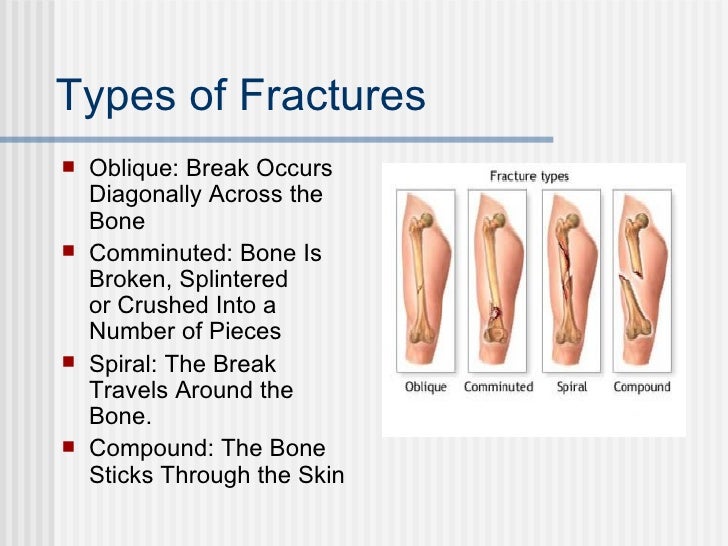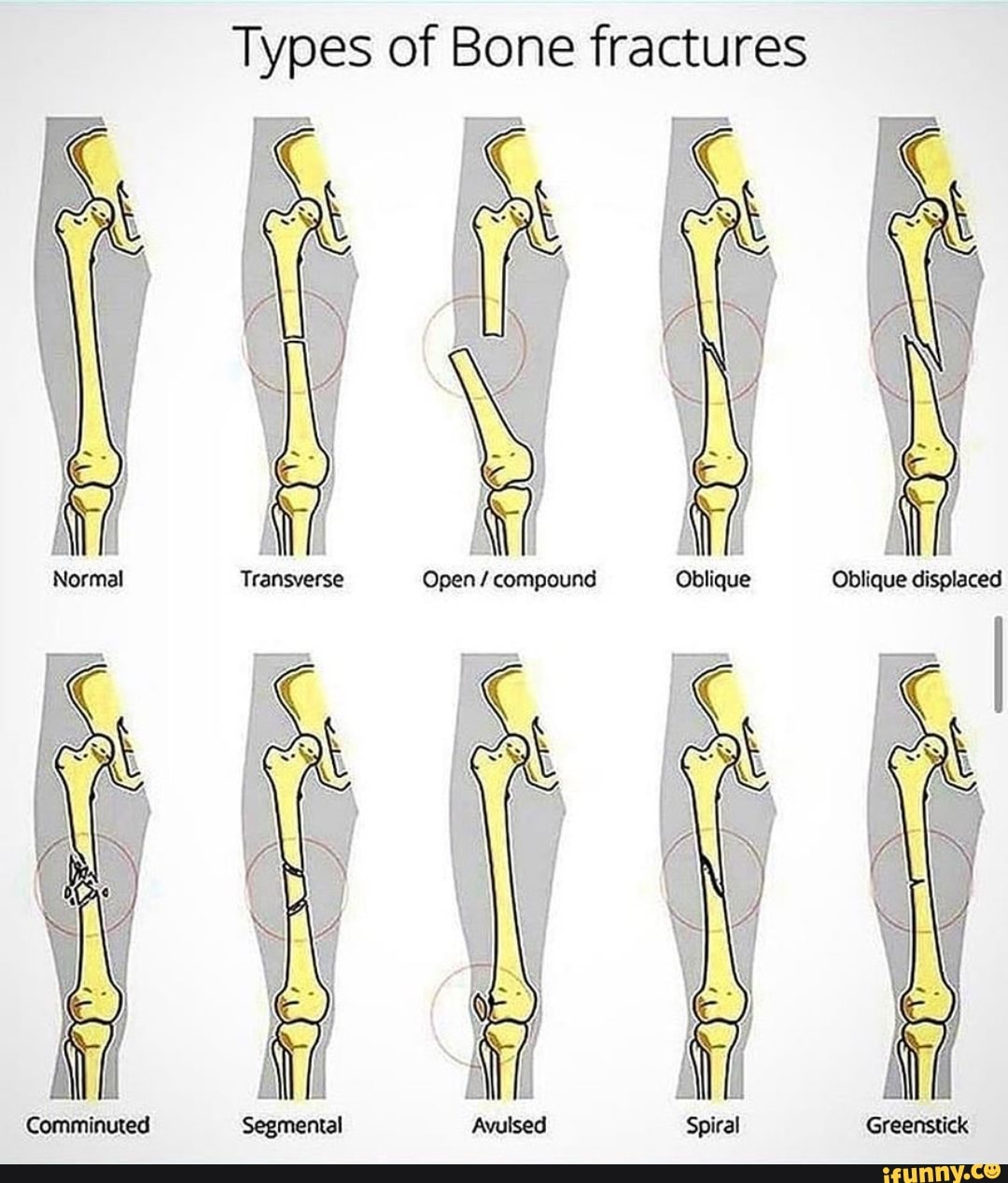

The chance of this reduces through active muscle contractions whilst in the plaster cast. Deep vein thrombosisĭeep vein thrombosis (DVT) is a risk factor for lower limb fractures especially. These are often more troublesome in the long term than the broken bone itself. There is always the possibility of associated soft tissue damage to nearby muscles, tendons, ligaments, nerves, bursae and blood vessels. As a precaution, they are often treated with antibiotics.

DIFFERENT TYPES OF BONE FRACTURE SKIN
If the skin is broken then foreign bodies and bacteria can enter. In particular, they are at risk of developing an infection. Infectionįractures are most at risk of complications if they are open or displaced. Complications of fracturesĪ complication is a problem or condition caused by or following a broken bone. In particular, this makes the young athlete susceptible to avulsion fractures. Often growth plate areas are points where tendons attach to bone. It is a weak point which has not fully hardened as it has in an adult skeleton. The growth plate is the area at the end of a bone where new growth occurs. The bone partially fractures in the same way that a live tree branch would break. Therefore when a bending force compresses the bone on the inside it stretches on the outside.

As a result, the immature skeleton is more ‘bendy’ than an adult skeleton. This is because their skeletons have not fully grown or hardened. Greenstick fractures – these occur in young athletes.Avulsion – this is where a ligament or tendon tears, pulling a small piece of bone away with it.Comminuted – where the bone breaks into more than one piece.Spiral – which spirals around the bone.In addition to whether a type of fracture is open or closed, they are further classified depending on how the bone breaks. As a result, this type of fracture is susceptible to infection. An open fracture (or compound fracture) occurs when the end of the bone breaks the surface of the skin.A closed fracture is a break of the bone where the skin surface remains intact.Skull fracture – a break to one of the bones which form the head.Broken ribs – a break of any of the rib bones.Spinal compression fracture – a break in one of the vertebrae bones, caused by compression in the spine.Broken thumb – is either a break at the base of the thumb or the phalanges.Broken finger – involves any of the phalanges (finger) bones.Boxer’s fracture – is a break to either the 4th or the 5th Metacarpals which are the long bones on the outside of the hand.Metacarpal fracture – or broken hand is a break of any of the long metacarpal bones in the hand.Either overuse or an ankle sprain causes a Jones fracture.īuy Wrist Braces at Types of hand & finger fractures Jones fracture – is a fracture of the 5th metatarsal bone on the outside of the foot.It is not a common injury but may occur when landing badly from a height. Calcaneal fracture – this is a break of the calcaneus (heel bone).Metatarsal fractures – occur in the long bones in the foot.The following are common types of acute fractures in sports. This progresses to a stress fracture and eventually, if ignored can become an acute fracture. They develop gradually over time beginning with a ‘stress reaction’ of the bone. Overuse or repetitive stress causes stress fractures. As a result, the risk of infection is high. Bruising develops and if the bones displace then deformity is likely.Īn open fracture or compound fracture occurs when a bone fragment pierces the skin. Symptoms include severe pain at the time of the injury, tenderness and rapid swelling. They are more common in contact sports, skiing and motor racing. Acute fractures occur suddenly from direct trauma, falls or violent twisting movement.


 0 kommentar(er)
0 kommentar(er)
